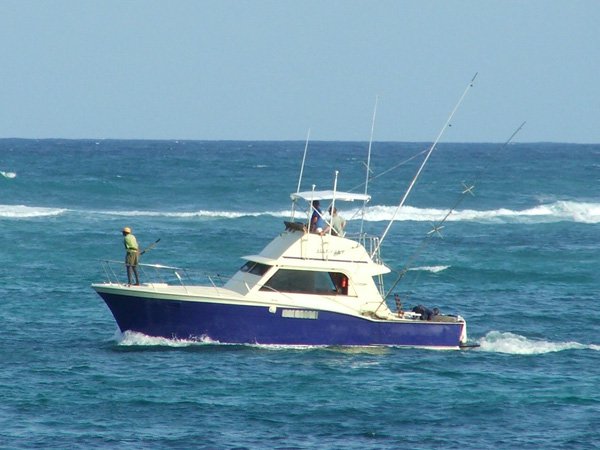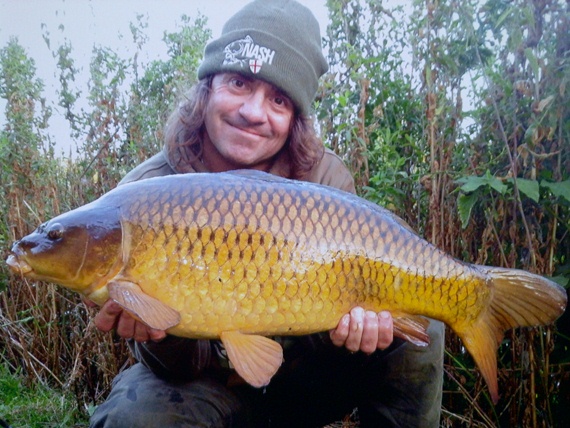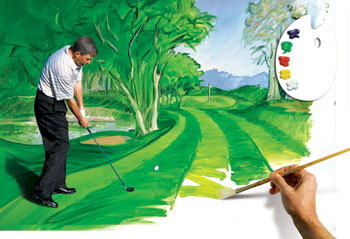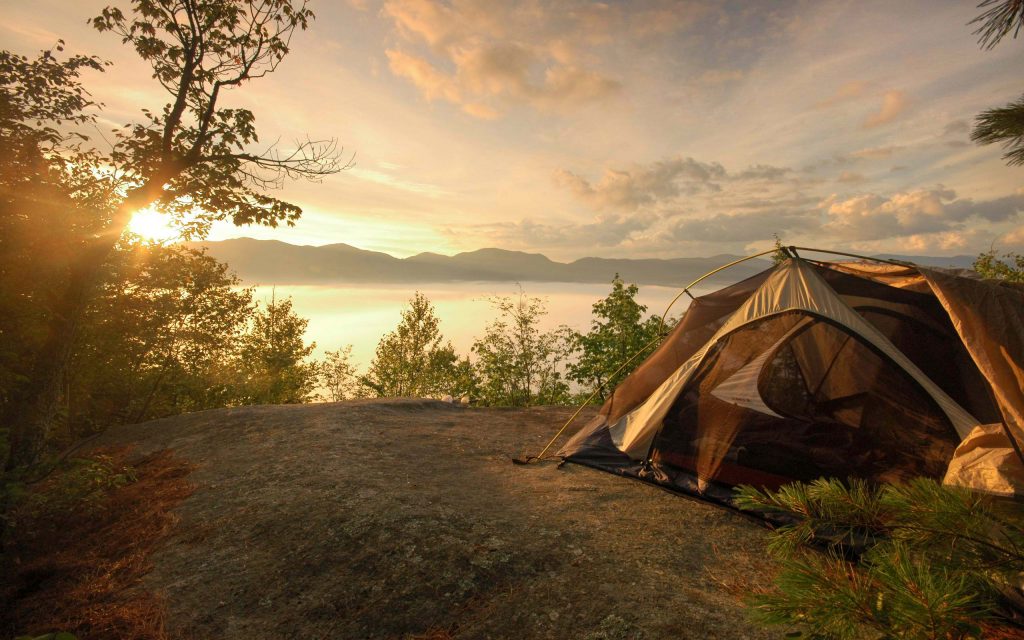
Whilst GPS navigation has been one of the great invention of modern times and widely used by boaties, there are times when traditional navigation tools will come in handy.
There are times when the GPS unit is lacking, like when the batteries go flat or the unit crashes.
And it does happen. This is why, by law, you're required to have back up navigation aids on board – like charts and a liquid damped compass or second GPS.
Recently, a boatie was booked in the GBR Marine park, because his GPS had flat batteries, thus he did not have an effective navigation aid on board. That is going over the top, but the States are desperate for revenue.
When the GPS fails you really have to go back to basics. And the good news is that with old fashioned chart and compass you can still get home safely. In fact, people travelled the world quite safely before GPS was even invented.
Sadly, the importance of the compass has been lost in the age of modern electronics. However, when you life depends on it getting home, the compass will come in very handy because it doesn't rely on batteries or electronic power.
With a good topographic area chart/map and a reliable compass you find your favourite fishing holes and get home safely. Using paper maps a hunter can pinpoint distant ridges and valleys, and a hiker can avoid high energy-snapping walks.
Compasses:
Basically, there are 3 types of compasses – fixed dial, floating dial and orienteering. Fixed dial models are cheap, often inaccurate but commonly used by hikes. There was a trend a few years ago when they were installed in the knife handle butts, waterproof containers and in survival kit boxes. However, these units were totally useless for reliable field or sea use.
Boaties and anglers are better served by the floating dial compass, and it's by far the easiest to use in the field also. Simply point the travel arrow to the direction you wish to head to and read the indicator degree marked off the compass dial. This degree heading is then read off the floating dial at the index inscribed into the base of the housing. Relatively inexpensive and reliable, a floating dial compass is a good back-up unit for the GSP, either dash mounted or in the safely box.
Meanwhile, the better and more expensive orienteering compasses are designed for serious outdoors navigation. They are relatively easy to use in real practice, important in the field and on the water.
The orienteering compass is liquid dampened has a clear base to facilitate reading the dial easier and is fast, relatively cheap and extremely accurate when used in conjunction with a map or chart.
Hold the compass in your hand point the directional travel arrow or line toward your goal, landmark or objective and rotate the housing until the north pointing needle is aligned with the N for north symbol. Next, read the degree heading off the compass housing.
Purpose boat compasses are much more complicated and expensive compared to portable models and are based on the reliable and time-tested orienteering model. They have much larger dials and numbers, and shock protection while the better models have interior lighting or fluorescent bases so that they can be read at night and in dim light.
Parallax and magnetic errors, and poor placement making viewing difficult are problems to avoid when mounting a compass. Most modern boat compasses have internal compensating magnets, which prevent the old problem of deviation error caused by magnetic and electronic fields from boat instruments.
Record compass headings on popular runs, particular routes you normally follow. Be warned that when running the reverse course you cannot add or subtract 180 degree from the forward trip to get an accurate reading for the return journey as residual deviation may provide a false reading. Course protractors and plotters, coursers, parallel rulers and dividers are old hat now, but having one on a large boat is recommended as they make plotting a totally reliable course very simple when used in partnership with a map/chart and compass – in case the GPS crashes.
Maps:
For land-based fishing explorations the AUSLIG Australian Topographic Maps are highly recommended. They are available in lMW 1:1 million scale published topographic map, 1:250 000 scale published topographic scale, 1:250 000 and 1:100 000 scale published topographic map special, 1:100 000 scale published topographic map and in 1:100 000 scale unpublished topographic map in plain paper or film copies. These maps are available from AUSLIG Map Sales, P.O.Box 2, Belconnen Act 2616 or visit www.auslig.gov.au Email: [email protected] for local dealer information.
All areas in Australia and its adjacent waters are covered by AUSLIG. These is a lot to be learned from a topographic map that is not available from road maps, or the GSP unit. Topographic maps show such wealth as the date it was printed, or revised, the geographic north arrow, magnetic north arrow, magnetic declination, contour elevation intervals, scale in metres and kilometers, legend of man-made objects, towns, buildings, mines, tracks, roads, the nature of the land, lakes, streams, rainfall information, water guide, index to adjoining maps and much more. The maps are also colour coded to indicate vegetation, lakes and streams, tidal estuaries and adjacent sea forshore.
Marine charts are published by the Australian Hydrographic Services and generally available in hard copy in scale of 1:300 000 for various designated latitudes. The depths and heights are in metres at tide level soundings in metres above the datum. Even though I have a lowrance Elite-5 GPS unit in my Quintrex 420 Dory, I find marine charts very useful to plan outings – especially when in camp – and when fishing close inshore, particulary in the Gulf of Carpentaria. Much of which remains unsurveyed along the shore line, through major streams show channel depths.
Orientating a map with a compass is done by turning the map to match the area you are in. Place it on a flat surface so that the compass needle points to the north, which is true north instead of magnetic declination. If you are travelling a long distance you must allow for this and correct it. It varies in places, up to 20 degrees in many parts of the world. Each degree error results in a miss by 1/60th of the destination travelled. To put it simply, if you boat one kilometer and 15 degrees off the designated heading you will miss the point by 15 metres, which if you cruise 16km at the same setting you'll miss the target by almost 240 miles.
It's important to cater for this error when boating in shoal seas and cruising over long distances. However, if you take a sight bearing on your destination, for instance a hill or shore before a rain squall or fog engulfs you, head in the direction the sight bearing indicated, though do allow for any reefs in your way.
Marine charts and land topographic maps have the grid magnetic declination angle of the covered map region provided. Draw parallel lines across the face of the map along the magnetic north line for easy orientation. A quicker way, and one I most use for short distances is by simply using the compass magnetic north arrow in conjunction with the magnetic north on the map aligned with the lay of the land. You can adjust better brand compass needle points to the true north instead of the magnetic north. If you are buying a new compass get one with that feature. Once the map is orientated to the location and the chosen route to your destination using the map, compass and nay geographical land marks or targets if available.
The more you use maps and compasses the better you get at using them. A map/chart of the region, together with a reliable compass and regular checks of your position in relation to your destination makes for trouble-free boating trips.
Experts’ carp fishing tips for autumn



Copyright © www.mycheapnfljerseys.com Outdoor sports All Rights Reserved